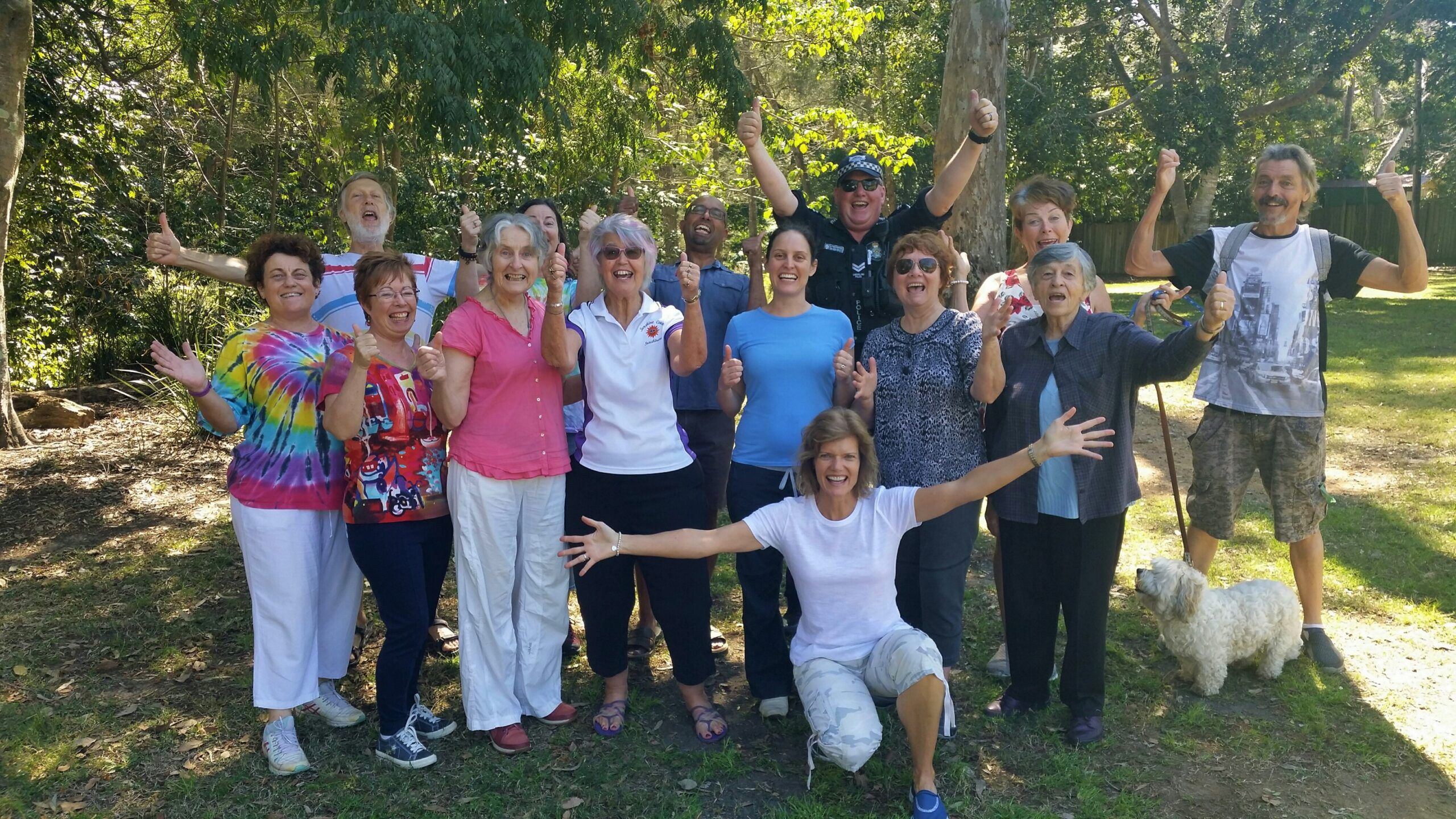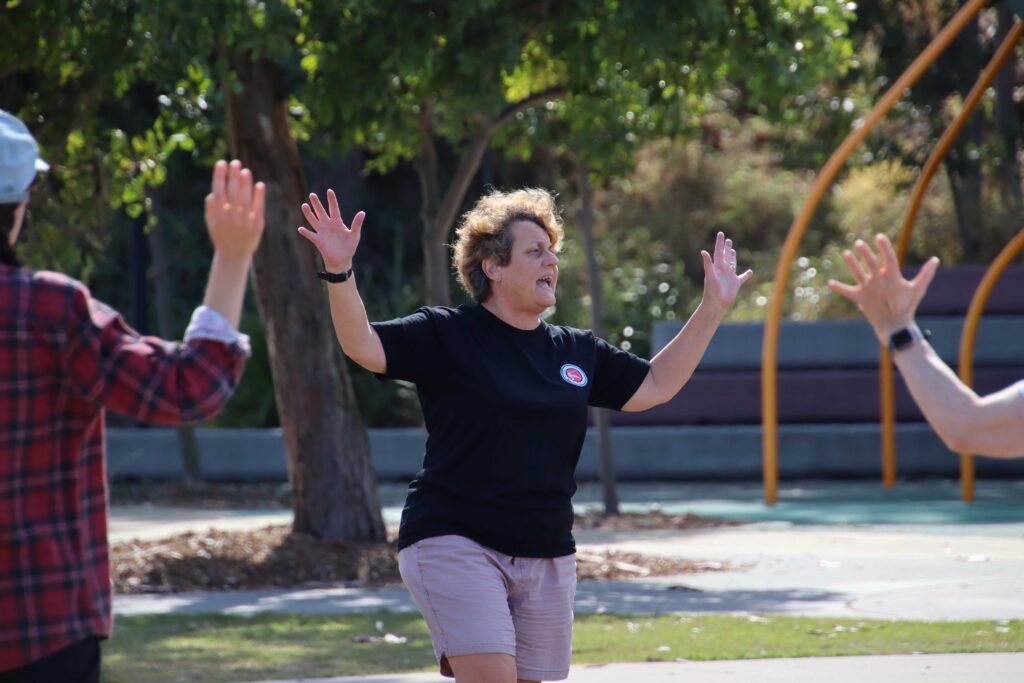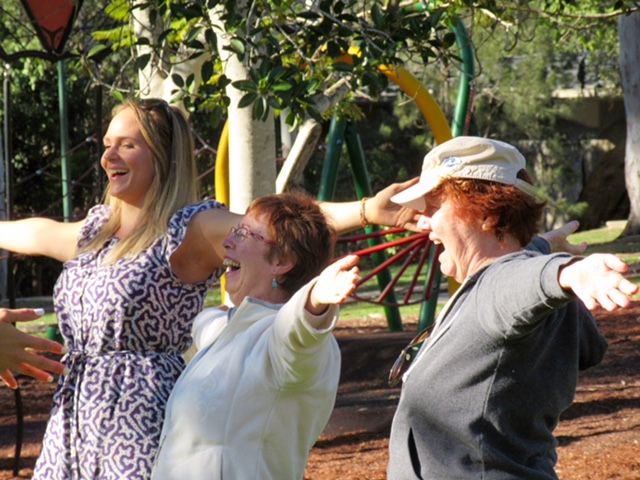
The benefits of being a volunteer laughter leader
National Volunteers Week starts today, celebrating those who give their time and skills – whether in formal organisations or simply lending a hand—to support a better community.
It’s made me reflect on what laughter clubs add to the community.
Did you know that laughter clubs are run by trained volunteers (known as laughter leaders) who take it upon themselves to create a hub of joyfulness practising laughter yoga, without any organisational backing to make it happen?
I am forever grateful to the fabulous volunteer laughter leaders who introduced me to the joys of laughter yoga at the now defunct Brisbane Laughter Club – New Farm.
I smile with satisfaction when I see The Gap Laughter Club which I formed 8 years ago going from strength to strength with 5 trained volunteer laughter leaders taking turns to run the sessions, years after I moved away.
I appreciate North Lakes Library providing space for the laughter club I’ve hosted for 3 years on a Thursday evening in my new neighbourhood, and I really look forward to seeing familiar faces walk through the door.

Why volunteering is good for us
Some years ago University of Canberra academic Dr Thomas Nielsen advocated for a ‘curriculum of giving’.
“Sustainable wellbeing comes not from money and consumerism but from having meaningful happiness in our lives,” he said.
“There is one shared denomination for what people across cultures and religions report as giving them happiness in their lives: being something for others.
“Giving is one of the strongest predictors of increasing our health and happiness.”
What I get out of being a laughter volunteer

As we head into National Volunteers Week, I’ve reflected with gratitude on the benefits I’ve personally derived from laughter club volunteering:
- Starting a laughter club gave, and continues to give, me a sense of purpose. I relish helping others.
- Volunteering as a laughter leader introduced me to new people, many of whom I count as dear friends.
- Creating a laughter club as a volunteer provided a sense of community particularly when I was new to an area.
- Volunteering boosted my self-confidence and self-belief.
- Laughter club presentations gave me the faith to run workshops for which I am paid.
- Volunteering as a laughter leader elevated my creativity beyond imagination.
- Volunteering as a laughter leader honed my ability to think on my feet.
- Starting a laughter club made me commit to doing laughter yoga – and that has boosted my physical and emotional health beyond measure.
- Laughter club volunteering reacquainted me with the importance of playfulness.
- Volunteering as a laughter leader is FUN!
Read the research showing how just one hour a month leading a laughter club can make a difference.
Read some of the benefits of laughter yoga for physical, emotional and social wellbeing.
To every laughter leader anywhere, here’s cheers for the impact you make: Very Good, Very Good, YAY!.
And if you happen to wonder why there’s no laughter club near you, may National Volunteers Week inspire you to consider making it happen yourself.
Give Happy. Live Happy…Laugh!
HeatherJoy Campbell is an Australian-based global ambassador of Laughter Yoga International. She delivers laughter yoga wellbeing sessions and workshops in workplaces, community centres and aged care and runs two laughter clubs. She’s the lead trainer of ‘laughter leaders’ in Queensland.
What is Laughter Yoga?
Laughter Yoga is a body-mind practice, developed by a medical doctor, Dr Madan Kataria, in India in 1995.
It’s a unique blend of laughter exercises and yogic breathing techniques that has garnered attention worldwide for its many and varied physical, mental and social health benefits.
Participants laugh, clap, chant, move playfully and breathe deeply. There’s no reliance on jokes or humour. You don’t have to be ‘in the mood’ to laugh.
